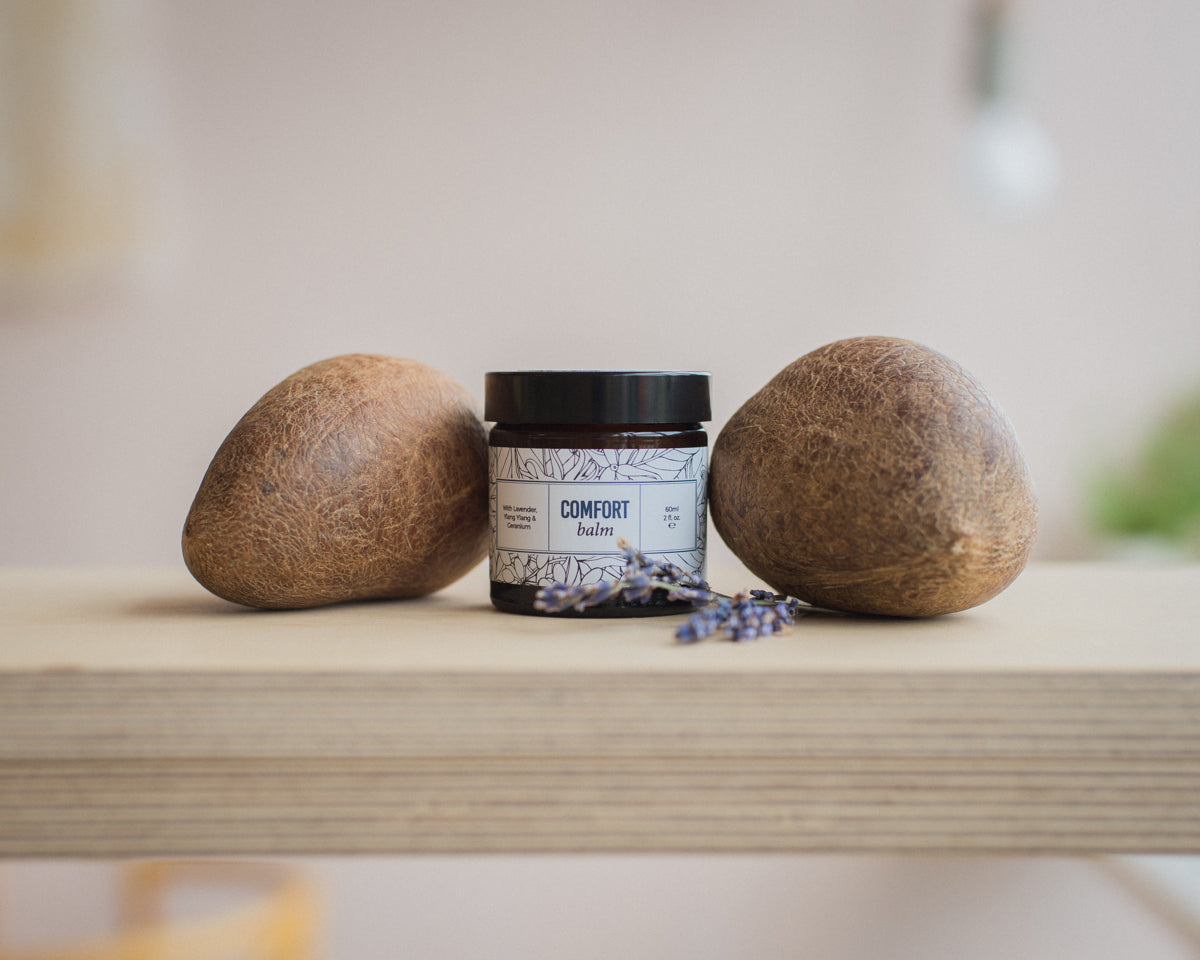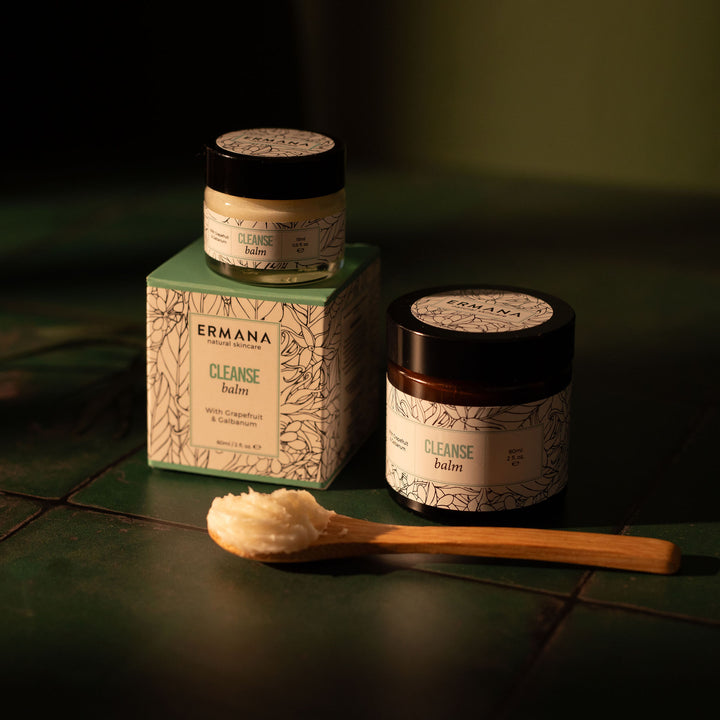
With so many different moisturisers on the market sometimes its difficult to determine which is the best one for your skin. In this article, we discuss the advantages of balms, how and when they should be used.
What is a balm?
According to Collins dictionary; "a balm is a sweet-smelling oil that is obtained from some tropical trees and used to make creams that heal wounds or reduce pain". Balms have been used for centuries to heal, soothe, moisturise, and smooth skin. Many are thick and occlusive enough to create a protective barrier for skin, almost like a plaster or band aid but much more pleasant.
Balm v's Moisturiser v's Lotion
The main difference between a balm, moisturiser and lotion is its consistency and thickness. All three, have one common goal, to hydrate, treat and repair your dry skin. However not all are equal in terms of ingredients. Lotions have the lightest consistency, with high water base and low oil content and are used mainly for body. A moisturiser or cream is a bit heavier in consistency and contains a mixture of water and oil in its base. Most moisturisers and creams are formulated for the face.
A balm is normally free from water and is formulated with oils, butters and/or beeswax . The main ingredient of most moisturisers and lotions is water or aqua (check your labels) which does make you wonder what you are paying for when buying expensive brands. When water is used in any product then it is necessary to add a preservative to stop the water from degrading and bacteria growing. Many preservatives don’t actually benefit the skin and can cause skin breakouts. Balms on the other hand are packed with active ingredients that deliver results and make a significant difference to your skin.
A balm not only provides moisture, but it also helps the skin to retain moisture. The oils nourish and soften the skin, while the beeswax creates a barrier on the skin, locking in moisture. The beeswax also provides a barrier from the air, keeping moisture from evaporating from the skin and shielding the skin from the elements.
Balms are usually solid at room temperature and melt into liquid when they come into contact with your skin. They absorb best when applied to damp skin, and typically, you need only a very small amount to provide and occlusive, nourishing protective layer to your skin and seal in your skincare for optimal results.
When to use a balm?
Balms are especially beneficial for anyone with dry skin, or those in cold/dry climates. Oils layer beautifully with balms, too, but keep in mind that you typically don’t need a cream and balm in the same routine. They are extremely versatile and excellent for dry areas. Our range of balms treat different areas of the body, such as the hands (comfort balm) , muscles and joint areas (tone muscle balm) or the feet and heels (fresh foot balm) Normally balms are not designed for facial use because they are much denser and intensive, however we recommend using as a treatment rather than as part of your daily skincare routine. The exception to this is our cleanse balm which can be used daily as it is removed after use.
Studies have shown that oil-based products like balms are best for treating eczema and dermatitis. The more oil in a moisturiser, the better it usually is at treating eczema. The best moisturizers to use are the ones that feel “greasy”, because they contain more oil. These are very effective at keeping moisture in and irritants out. According to the Eczema Organisation “Natural oil has been used in skin care for centuries. A good number of natural oils have beneficial fatty acids that help to repair the skin’s natural barrier, which is defective in patients with eczema.” For best results use within three minutes of bathing or showering to “lock in” moisture and protect the skin barrier. Although if your skin feels dry, itchy or irritated, moisturise as much as you feel necessary. We recommend our soothe mama balm for eczema and dermatitis as it is fragrance free therefore wont cause any irritation.
To keep your balm at its best, keep it cool. When using simply melt a pea sized amount between the palms of your hands to melt into oil like consistency and apply to skin. Some balms may be a little gritty at times due to the lack of nasty chemical emulsifiers, this is a reminder that you are using a completely natural product.

